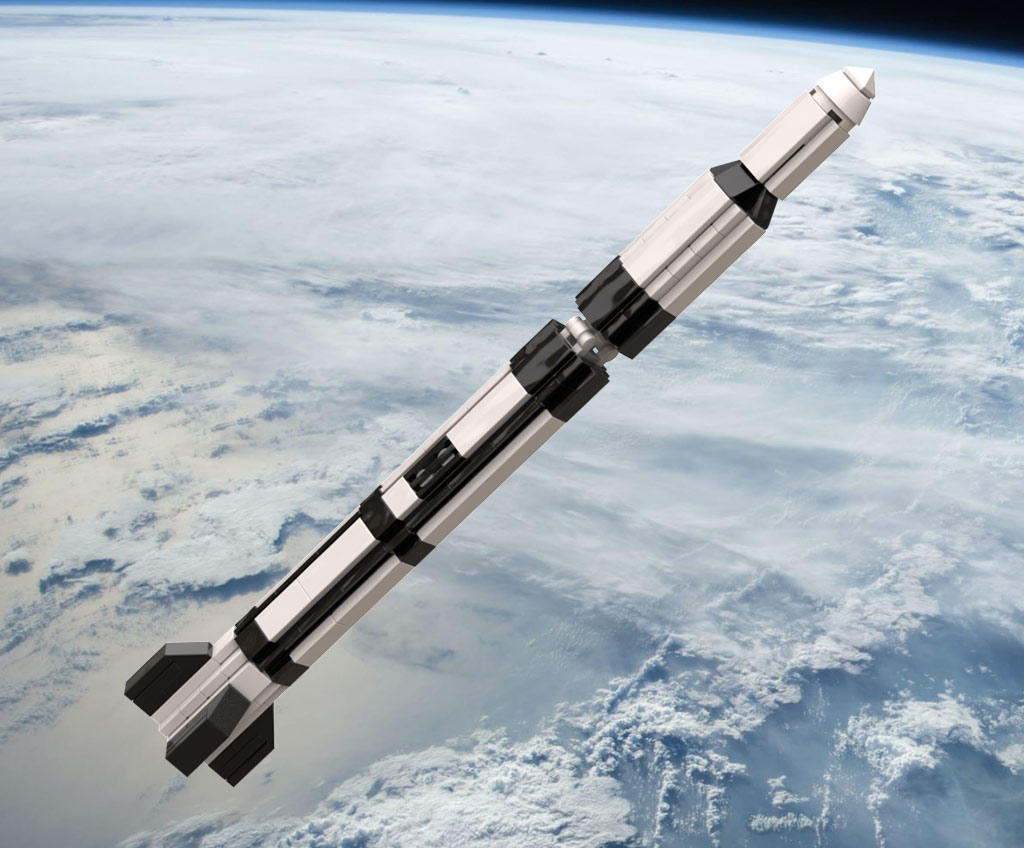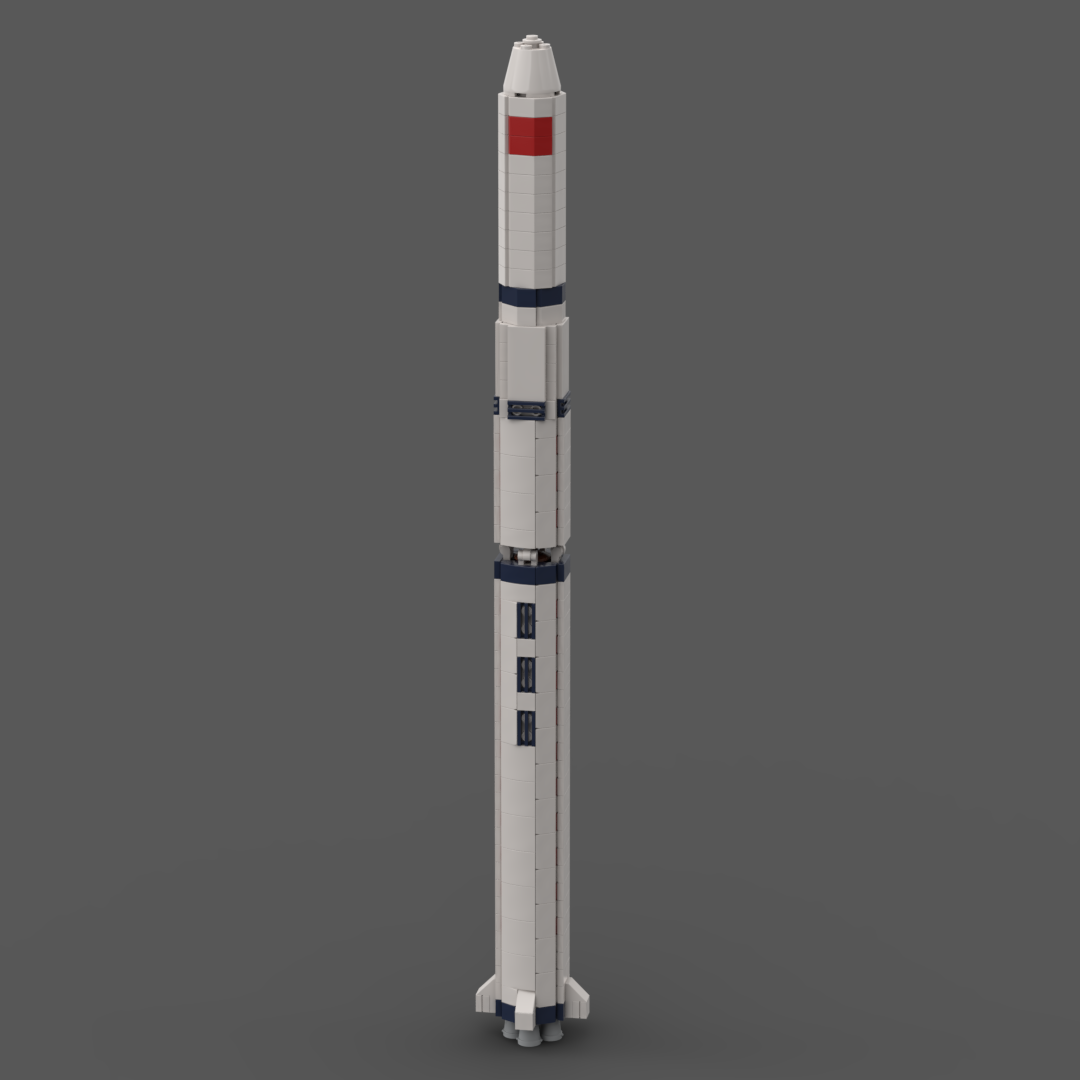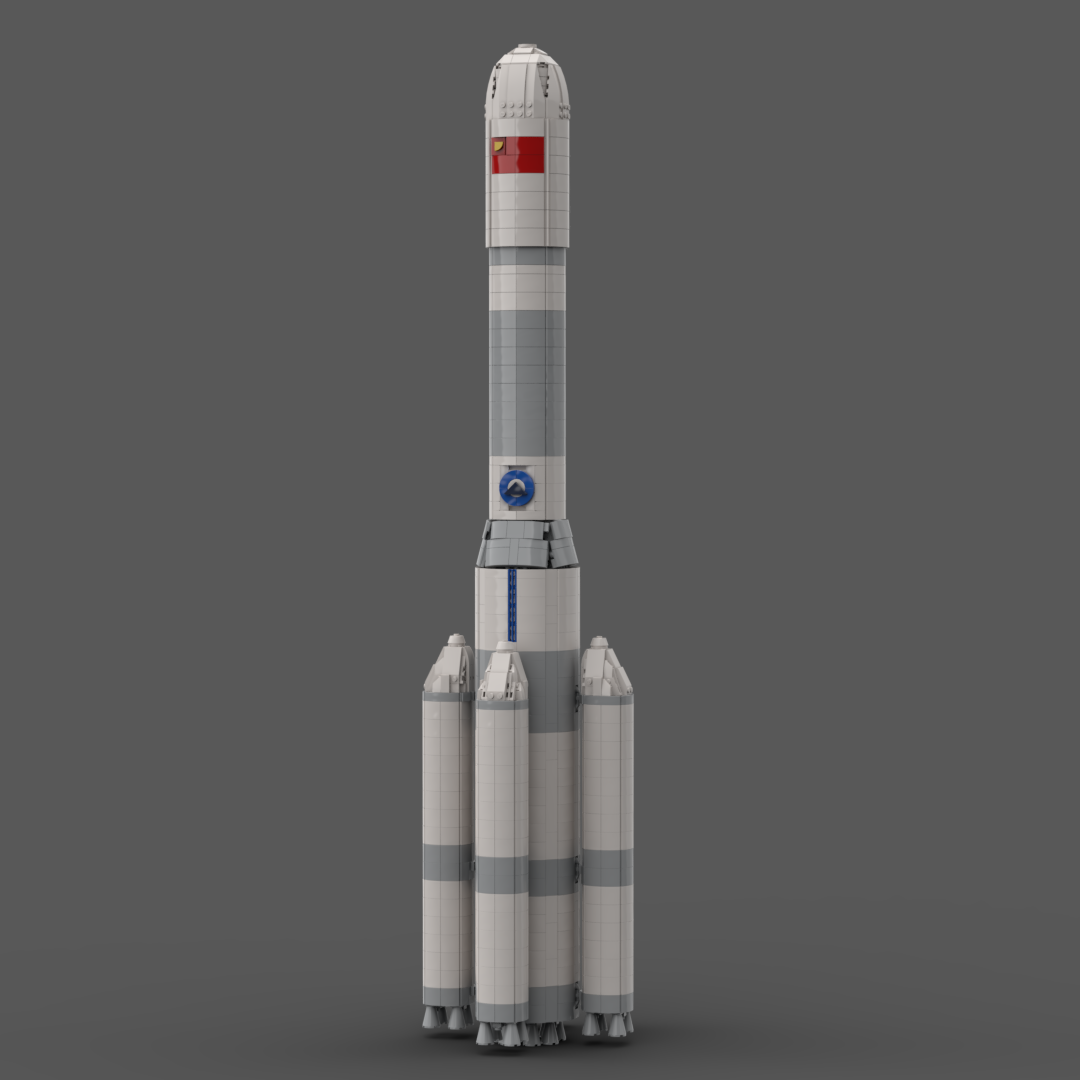
LEGO Designer:
Florentin Möller (SkySaac)
Designed:
December 2021
Categories:
All, Heavy Lift Launch Vehicles, Launch Vehicles, Space Agency - CNSA
Launch Vehicle Details
Stages:
Length:
Diameter:
Mass at Launch:
Low Earth Orbit Capacity:
Total Thrust:
Apogee:
Class:
Long March 5, or Changzheng 5 (CZ-5), and also by its nickname “Pang-Wu”, is a Chinese heavy-lift launch vehicle developed by the China Academy of Launch Vehicle Technology. It is the first Chinese launch vehicle designed to use exclusively non-hypergolic liquid propellants. It is the fifth iteration of the Long March rocket family.
There are currently two CZ-5 variants: CZ-5 and CZ-5B. The maximum payload capacities are approximately 25,000 kg to low Earth orbit and approximately 14,000 kg to geostationary transfer orbit. A 3-core human-rated variant, referred to as CZ-5DY, is under development; this variant will be capable of launching a crewed spacecraft into lunar orbit.
The Long March 5 roughly matches the capabilities of American NSSL heavy-lift launch vehicles such as the Delta IV Heavy. It is currently the most powerful member of the Long March rocket family and the world’s third most powerful orbital launch vehicle currently in operation, trailing the Falcon Heavy and Delta IV Heavy.
The first CZ-5 launched from Wenchang Space Launch Site on 3 November 2016 and placed its payload in a suboptimal but workable initial orbit. The second CZ-5 rocket, launched on 2 July 2017, failed due to an engine problem in the first stage.
After an interval of almost two and a half years, the Long March 5 vehicle’s return to flight mission successfully occurred on 27 December 2019 with the launch and placement of the experimental Shijian-20 communications satellite into geostationary transfer orbit, thereby opening the way for the successful launch of Tianwen 1 Mars mission, lunar Chang’e 5 sample-return mission, and the modular space station, which require the lifting capabilities of a heavy lift launch vehicle.
First flight
The launch was planned to take place at around 10:00 UTC on 3 November 2016, but several issues, involving an oxygen vent and chilling of the engines, were detected during the preparation, causing a delay of nearly three hours. The final countdown was interrupted three times due to problems with the flight control computer and the tracking software. The rocket finally launched at 12:43 UTC.
Second flight
Its second launch on 2 July 2017 experienced an anomaly shortly after launch and was switched to an alternate, gentler trajectory. However, it was declared a failure 45 minutes into the flight. Investigations revealed the source of the second flight’s failure to be located in one of the core stage’s YF-77 engines (specifically, in the oxidizer’s turbo-pump).
Third flight
The Y3 mission of the Long March 5 program was launched on 27 December 2019, at about 12:45 UTC from the Wenchang Space Launch Site in Hainan, China. CASC declared the mission a success within an hour of launch, after the Shijian-20 communications satellite was placed in geostationary transfer orbit, thus marking the Long March 5 program’s return to flight.
Part count: 2016 bricks, 168 lots.
| Unit | width | length | height |
|---|---|---|---|
| Studs | 16.6 | 16.6 | 64.8 |
| Inches | 5.2 | 5.2 | 20.4 |
| Centimetres | 13.3 | 13.3 | 51.8 |
No external URL provided.
Launch History information from space.skyrocket.de
Launch History information from space.skyrocket.de









